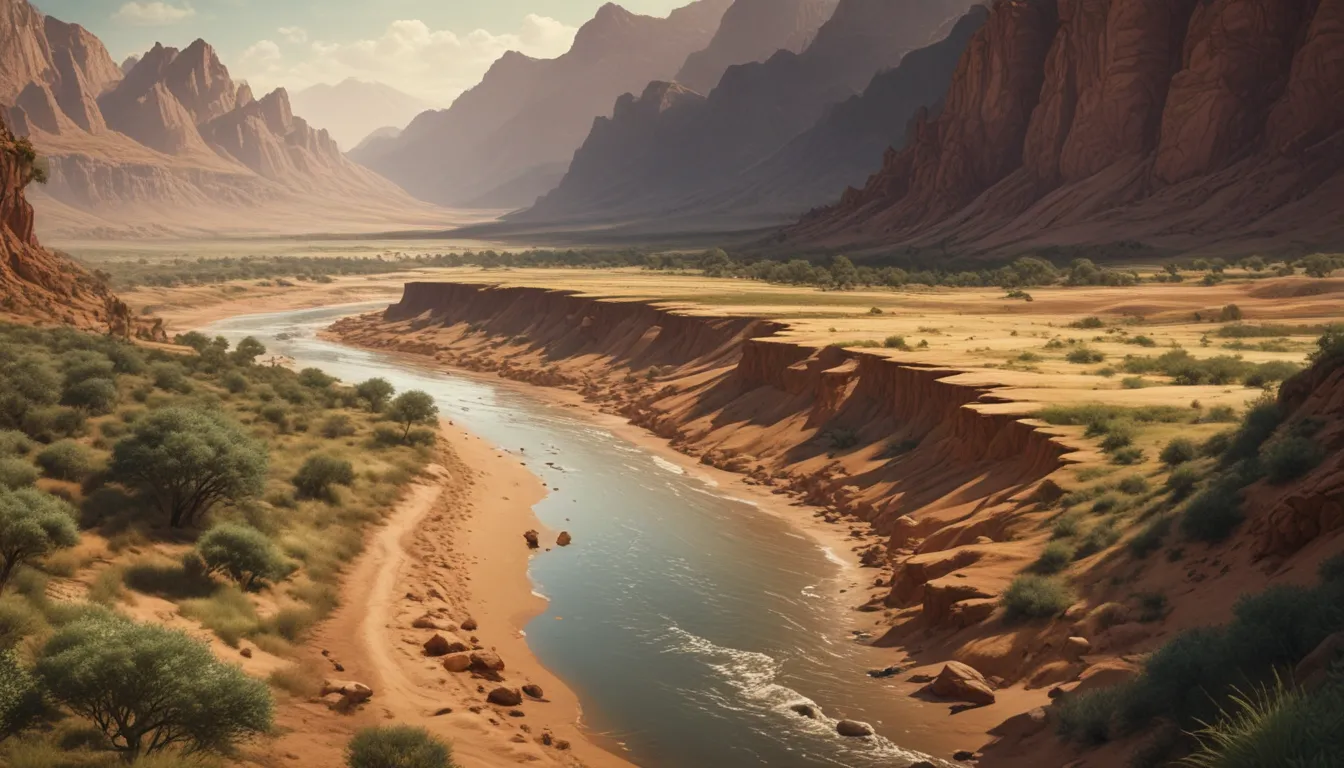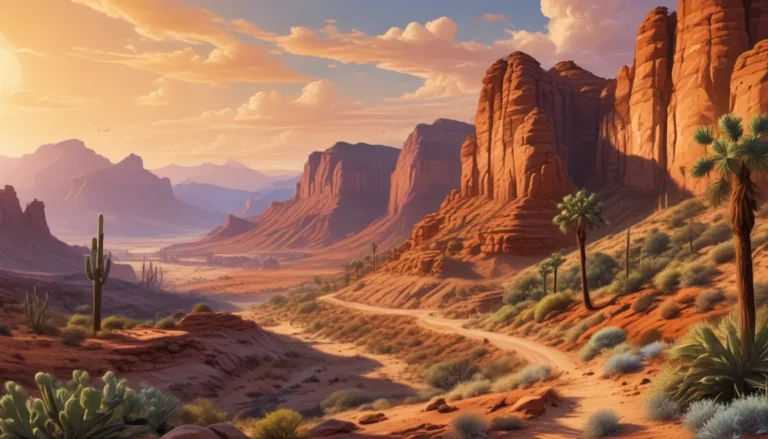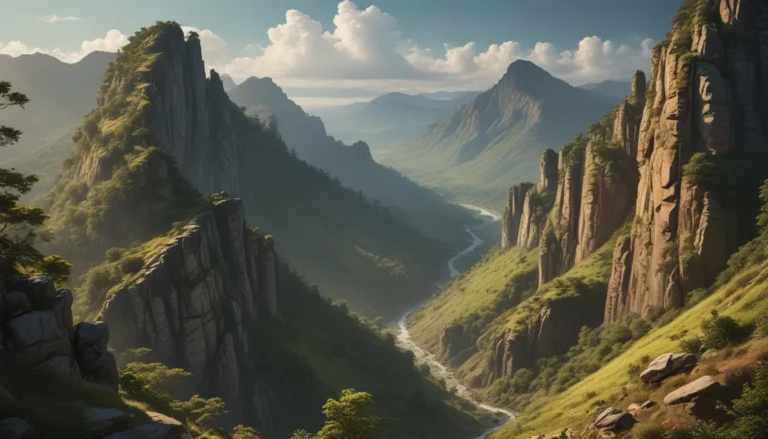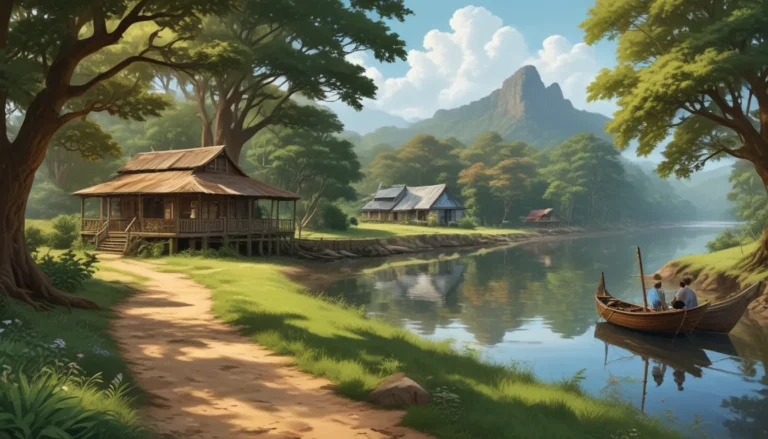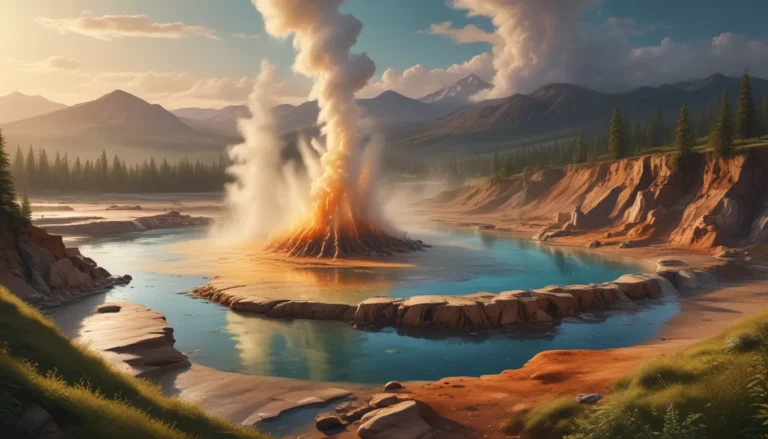A Note About Images: The images used in our articles are for illustration purposes only and may not exactly match the content. They are meant to engage readers, but the text should be relied upon for accurate information.
Alluvial plains, also known as river plains, are captivating geographical formations that cover vast expanses of land worldwide. These plains are formed through the deposition of sediment carried by rivers, resulting in flat and fertile terrain that is crucial for agriculture and human settlement. However, beyond their fertility lies a plethora of intriguing facts and features that make alluvial plains a subject worth exploring. From their diverse ecosystems to their role in shaping our planet, alluvial plains offer a window into the dynamic forces at work on Earth.
Unveiling the Alluvial Plain: A Closer Look
Alluvial plains cover a significant portion of the Earth’s surface, found on every continent except for Antarctica. They are formed by the accumulation of sediments like silt, sand, and clay carried by rivers over time. Due to the nutrient-rich sediments deposited, these plains are highly fertile and support a diverse range of plant and animal life, making them ideal for agriculture.
Diving into Diversity: Landforms of Alluvial Plains
Alluvial plains showcase a diverse range of landforms, from gentle slopes to flat terrains. These plains can include floodplains, deltaic plains, and estuarine plains, each with unique characteristics that contribute to their overall biodiversity and ecological significance.
The Dance of Water: Flooding and Wildlife Habitats
Alluvial plains are often prone to flooding due to their proximity to rivers. While floods can be catastrophic, they play a crucial role in depositing fresh sediments and enriching the soil. Additionally, these plains provide essential habitats for a wide array of wildlife, attracting various species of plants, animals, and birds with their fertile soil and abundant water sources.
Human History and Natural Resources: A Synonymous Relationship
Throughout history, alluvial plains have been sites of human settlement due to their fertile land and proximity to water sources. These plains also boast valuable natural resources like minerals, petroleum, and groundwater, supporting various industries and contributing to the economic development of regions where they are located.
The Silent Builders: Soil Compositions and Water Storage
Alluvial plains exhibit distinctive soil compositions that vary from sandy to loamy, influencing agricultural practices and the types of crops grown in these areas. Moreover, these vast plains serve as important water storage areas, acting as natural reservoirs that balance water levels during dry seasons and provide sustainable water sources for communities.
Guardians of Flood Control and Groundwater Replenishment
The wide and flat surfaces of alluvial plains contribute to flood control by allowing floodwaters to spread out and recede gradually, reducing their impact on nearby settlements and infrastructure. Additionally, these plains play a vital role in replenishing groundwater reserves, acting as natural filters that facilitate the percolation of water into underground aquifers.
Shifting Sands: Erosion and Mineral Deposits
Continuous water flow over alluvial plains can lead to erosion, altering the shape and characteristics of these plains over time. Additionally, these plains are known for their mineral-rich deposits, such as gold, diamonds, and other precious stones, which accumulate in the sediments and can be extracted through mining operations.
A Playground for Agriculture and Recreation
Thanks to their fertile soil, alluvial plains support diverse agricultural practices, ranging from rice cultivation to cotton production, contributing significantly to global food production. Moreover, these plains offer recreational opportunities such as fishing, boating, and bird watching, attracting nature enthusiasts and providing a tranquil environment for outdoor activities.
Embracing Change: Climate, Deposition, and Erosion
Alluvial plains are dynamic and ever-changing landscapes influenced by climate change, which can impact deposition patterns and the sustainability of ecosystems. The balance between sediment deposition and erosion shapes the morphology of these plains, creating fascinating subjects for study and exploration.
Conclusion: The Tapestry of Alluvial Plains
In conclusion, alluvial plains are captivating geological formations that offer valuable insights into the Earth’s landscapes. These vast expanses of fertile land shaped by rivers and streams play essential roles in agriculture, wildlife conservation, and natural resource management. From their historical significance to their modern-day contributions, alluvial plains continue to intrigue and inspire us with their diversity and resilience.
FAQs: Unveiling the Mysteries of Alluvial Plains
- Q: What is an alluvial plain?
-
A: An alluvial plain is a flat or gently sloping landform created by the deposition of sediment carried by rivers and streams.
-
Q: How are alluvial plains formed?
-
A: Alluvial plains form when rivers and streams deposit sediment, such as sand, silt, and clay, as they flow downstream and lose velocity.
-
Q: What makes alluvial plains fertile?
-
A: Alluvial plains are fertile due to the deposition of nutrient-rich sediments, making them ideal for agriculture and supporting abundant plant life.
-
Q: Are all alluvial plains the same?
-
A: No, alluvial plains can vary in size, shape, and composition depending on factors such as the type of sediment, water flow, and geological history of the region.
-
Q: Do alluvial plains have any other uses?
-
A: Yes, alluvial plains are not only used for agriculture but also for urban development, as the flat terrain makes it suitable for building infrastructure and human settlements.
-
Q: Are alluvial plains found only near rivers?
- A: While alluvial plains are primarily associated with rivers, they can also be found along the coast and in areas where glaciers once existed.
By uncovering the wonders and intricacies of alluvial plains, we gain a deeper appreciation for their significance in shaping our world and sustaining life on Earth. These natural marvels continue to amaze and enrich our understanding of the dynamic processes that govern our planet. Let us continue to explore, learn, and cherish the beauty and complexity of alluvial plains as essential components of our global ecosystem.
